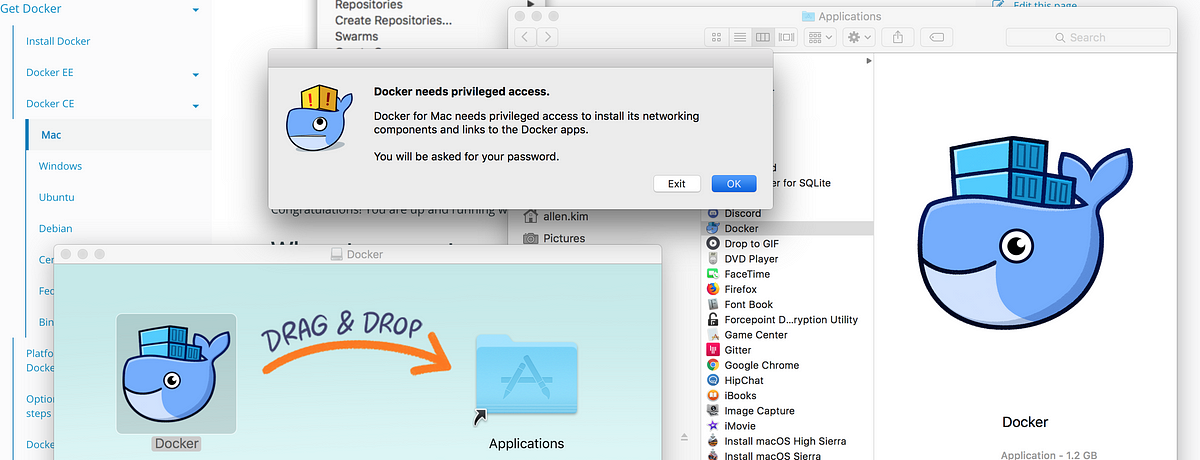

- #Mac os docker images location how to
- #Mac os docker images location for mac
- #Mac os docker images location install
- #Mac os docker images location full
I have used the latest version of 2019, however, if you need a different version you can check out the Microsoft SQL Server page on Docker Hub.įor more information on docker runcommands, check out the documentation. /mssql/server:2019-latest is the image we wish to run.Port 1433 is the default TCP port that SQL Server will listen on. -p 1433:1433 will map the local port 1433 to port 1433 on the container.

This is the System Administrator password.
#Mac os docker images location install
We can install the SQL Server on the Mac and run the Server image all at once by running the following command in the terminal.
#Mac os docker images location how to
Then click "Apply and Restart" How to Install SQL Server on Mac Next, choose the "Resources" tab, note - on some versions of Docker you may find it under the "Advanced" tab, and adjust the memory slider to be at least 4GB. Once installed, the first thing we will need to do is increase Docker's default memory allocation as SQL Server will require a bit more grunt.Ĭlick on the Docker daemon icon in the top menu and select "Preferences".
#Mac os docker images location for mac
To get started we will need to download Docker for Mac and follow the installation instructions. Microsoft SQL Server on macOS: Getting Started with Docker
#Mac os docker images location full
It's separate from this blog post tutorial but will give you a full rundown of many APIs at once. NET Core application, then check out this free 5-part video series. If you would like to see a full integration of Twilio APIs in a. We will use a Docker container to host SQL server, which means this technique could also be used on Windows and Linux and not just macOS. NET code, from web apps to Azure Functions, using Microsoft SQL Server on macOS. Yet I am still surprised by how many people don't realise that. NET developers have no longer been confined to development on Windows. The defaults are pretty safe, but I like to live on the wild side.Since the release of. If this is your first time, you will be asked if you like the defaults or whether you want to change any of them. In order to let lima know you are ready for some fun, you need to start it. You can install lima with this command: $ brew install limaĪfter installation, which might take a while, it is time to begin having some fun. One of the easiest ways to get lima running is with Homebrew. There is no reason to go to all that effort, when the lima project has figured out the details. Especially if you want to make the network connections a bit more seamless by using vpnkit, an open source project to create a VM's network that feels more like part of the host's network. This would be a lot of moving parts, and sounds like a lot of work. You can grab hyperkit, a minimalist Linux distribution running a container manager, and plumb all the pieces together. Unlike, say, VirtualBox, it does not come with fancy UI features to manage VMs. The hyperkit tool is designed to be a "minimalist" VM runner. The hypervisor is a low-level kernel feature, not a user-facing one.Įnter hyperkit, an open source project that will run VMs using the macOS hypervisor. Luckily, macOS has a built-in hypervisor, allowing virtual machines (VMs) on the Mac.


 0 kommentar(er)
0 kommentar(er)
